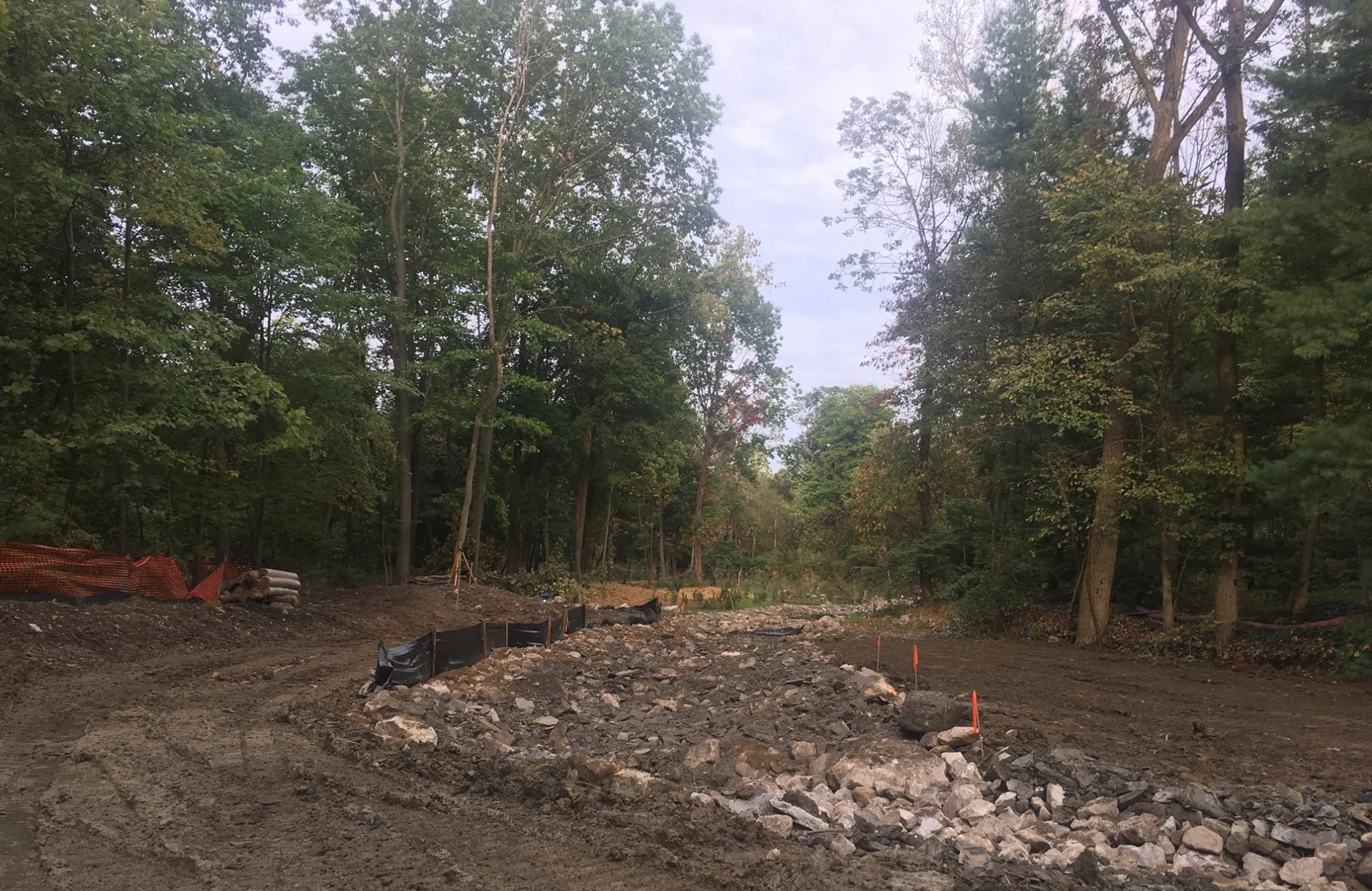Urban equity in the face of aging infrastructure
“This is community impact, with land as the medium.” — ISAAC ROBB, Western Reserve Land Conservancy

The following case study appears in “Taking the Plunge: Guidance and Inspiration to Help Land Trusts Protect and Restore Water Quality.” Download the complete guide here.
Like many older cities, Cleveland has a combined sewer system, in which both the stormwater and sanitary sewer water collect in the same pipes. This means that during storms, when the volume of storm water exceeds the capacity of wastewater treatment plants, sewage bypasses the treatment plants and is discharged directly into local lakes and streams. Beginning in 2011, a 25-year, $3 billion consent decree between the city and the EPA called “Project Clean Lake” proposed using green and grey infrastructure to reduce the amount of pollution entering Lake Erie by 4 billion gallons per year.
The accredited Western Reserve Land Conservancy, with a staff of 40 and a dedicated board, has worked on urban projects for more than a decade and has an urban lands program in the heart of Cleveland, in partnership with the Northeast Ohio Regional Sewer District, Cuyahoga Land Bank, and stormwater coordinators of nearby municipalities. These partners and the Conservancy’s legal and real estate experience enable them to work through highly complex projects, including assisting residents who choose to relocate to less flood-prone properties.
The Northeast Ohio Regional Sewer District’s stormwater master plan identifies high-priority areas for conservation and acquisition. These areas often include houses experiencing significant flooding or that are in a location where new infrastructure is required.
Western Reserve Land Conservancy serves as a contractor through a three-year commitment to do conservation planning, acquisition and relocation projects on behalf of the district. All relocation is entirely voluntary, with no use of eminent domain. The district is responsible for delineating wetlands and infrastructure engineering, while the land banks handle demolition. WRLC retains real estate experts to proactively target properties that come up on the market. For residents who choose to relocate to higher ground, the program also offers a no-to-low-cost lease.
Although Cleveland is right on Lake Erie, WRLC’s Vice President of Planning and Urban Projects Isaac Robb says that the residents don’t necessarily have water at the top of mind. “We’ve had a lot of development in areas that are contributing to flooding and runoff,” he says.
“Our urban projects are the inverse of what was considered 'traditional' conservation — protecting large acreages with long-term impacts. By contrast, these projects are directly adjacent to where residents live, work and play downtown and we see immediate positive impacts on the surrounding community,” Robb says. “To see how those things play out is really powerful for a park that’s a tenth of an acre or a backyard stream restoration.”
Much of this work is funded through a regional stormwater impact fee. There’s also a community cost-share program to address local issues; WRLC contributes matching funding generated by its property acquisitions, which are protected by conservation easements to reduce potential runoff in the future. Robb wonders about the potential impact of individual rain barrels or rain gardens on an ambitious goal like capturing 98 percent of Cleveland’s total overflow. Like many who are involved in municipal projects, he also worries about ongoing maintenance costs, both on the expensive underground tunnels and on the smaller BMPs. He is concerned about future increases in stormwater fees, particularly for the older and most urban sections of the city, which have increasingly aging infrastructure. Low-income residents in these areas are bearing the consequences of upstream sprawl and runoff from the interstate system.
Robb points out, “We’re not taxing these areas equitably.”